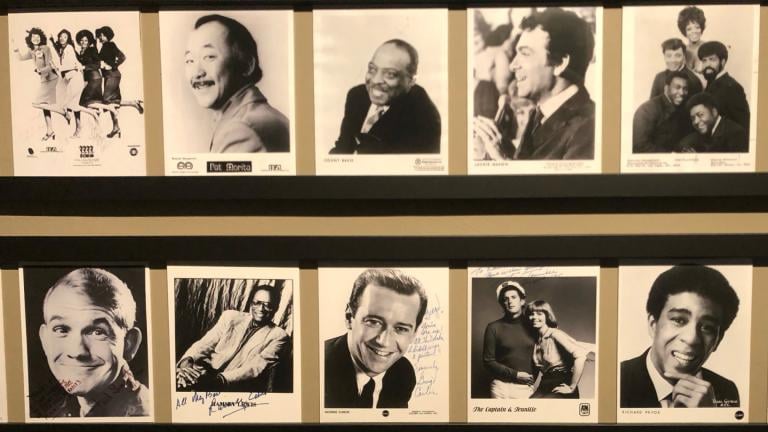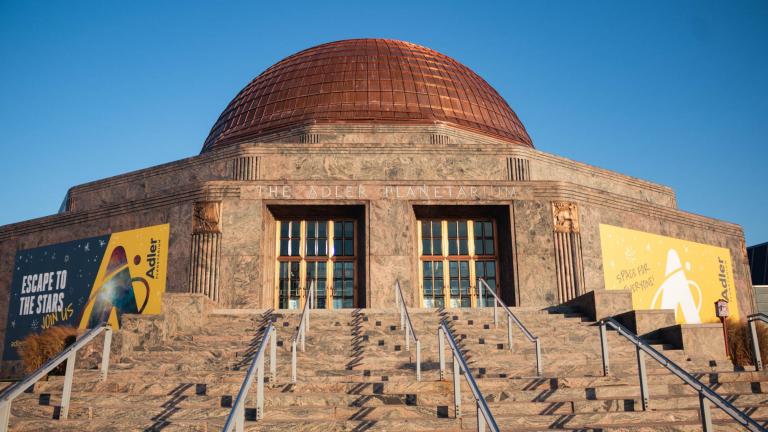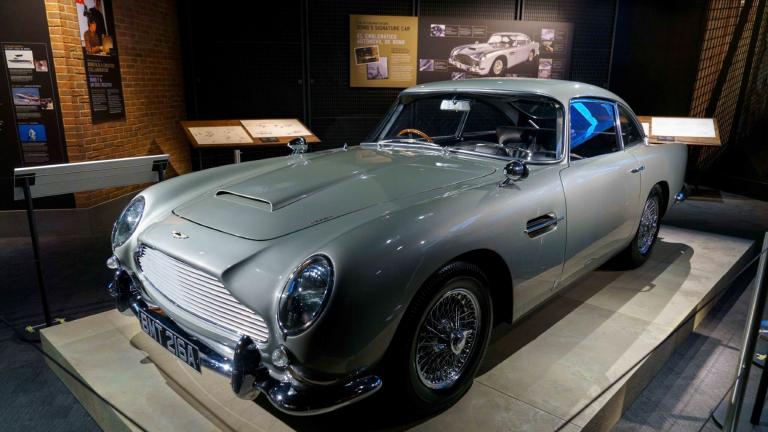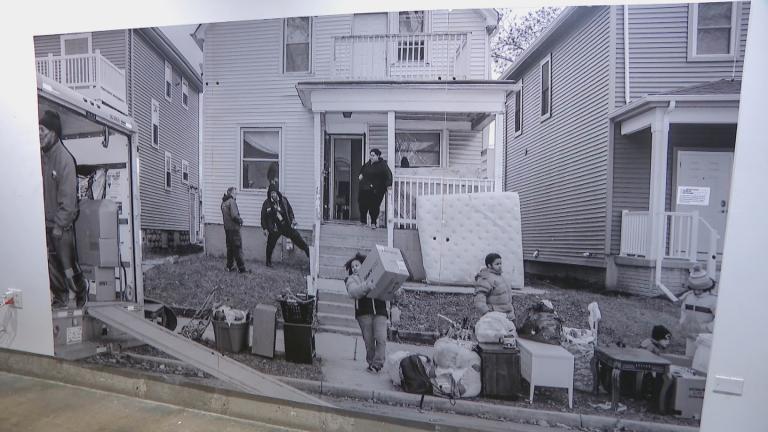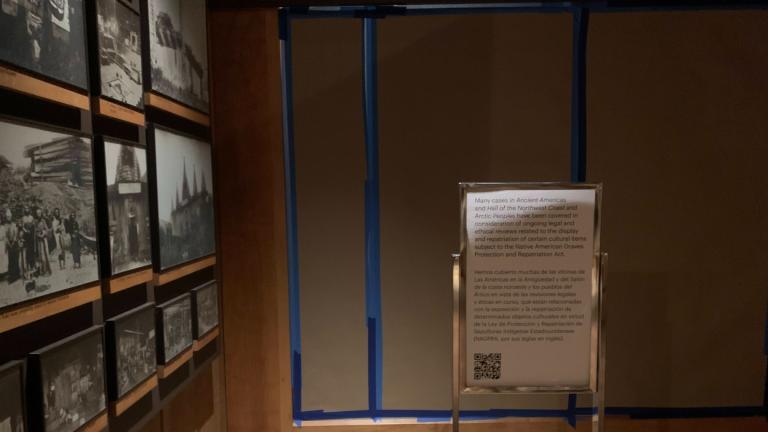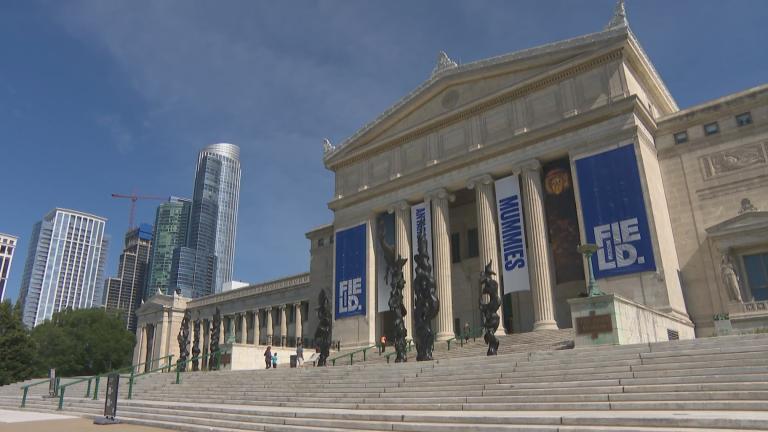 A mosaic at the Lizzadro Museum of Lapidary Art. (Marc Vitali / WTTW News)
A mosaic at the Lizzadro Museum of Lapidary Art. (Marc Vitali / WTTW News)
The late Chicago billionaire Richard Driehaus was a stockbroker, philanthropist and collector of artful objects, from Tiffany to silver to vintage cars.
He also appreciated lapidary arts — the cutting and polishing of stone, a blend of earth science and artistry.
Recently the Driehaus Foundation made a small but important donation to the Lizzadro Museum of Lapidary Art.
The Lizzadro Museum is a cultural cornerstone of the west suburbs. From its home in Oak Brook, the museum spotlights a captivating collection of stones, both hand-carved and in their natural state. Jade carvings, cameos and dioramas live side-by-side with fossils and rough minerals.
The museum was founded in 1962 by Italian immigrant Joseph Lizzadro, who had made a fortune in electrical contracting. Lizzadro was a dedicated rockhound, and he made jewelry in his spare time. When he died in 1972, he left an endowment to support the museum at its original site in Elmhurst.
In 2020 the Lizzadro Museum moved to Oak Brook and doubled in size. The family is still involved in day-to-day operations.
Dorothy Asher is the founder’s granddaughter. She’s also a board member and gemologist, and she’s excited about the new additions to the collection.
“They reached out to us in the summer,” Asher told WTTW News. “The Driehaus Foundation were looking for a home for some of his collection. I met Mr. Driehaus years ago, before he bought the mansion (the Driehaus Museum in Chicago) and restored it. He came here and saw what we had and, who knows, maybe that sparked his lapidary interests.”
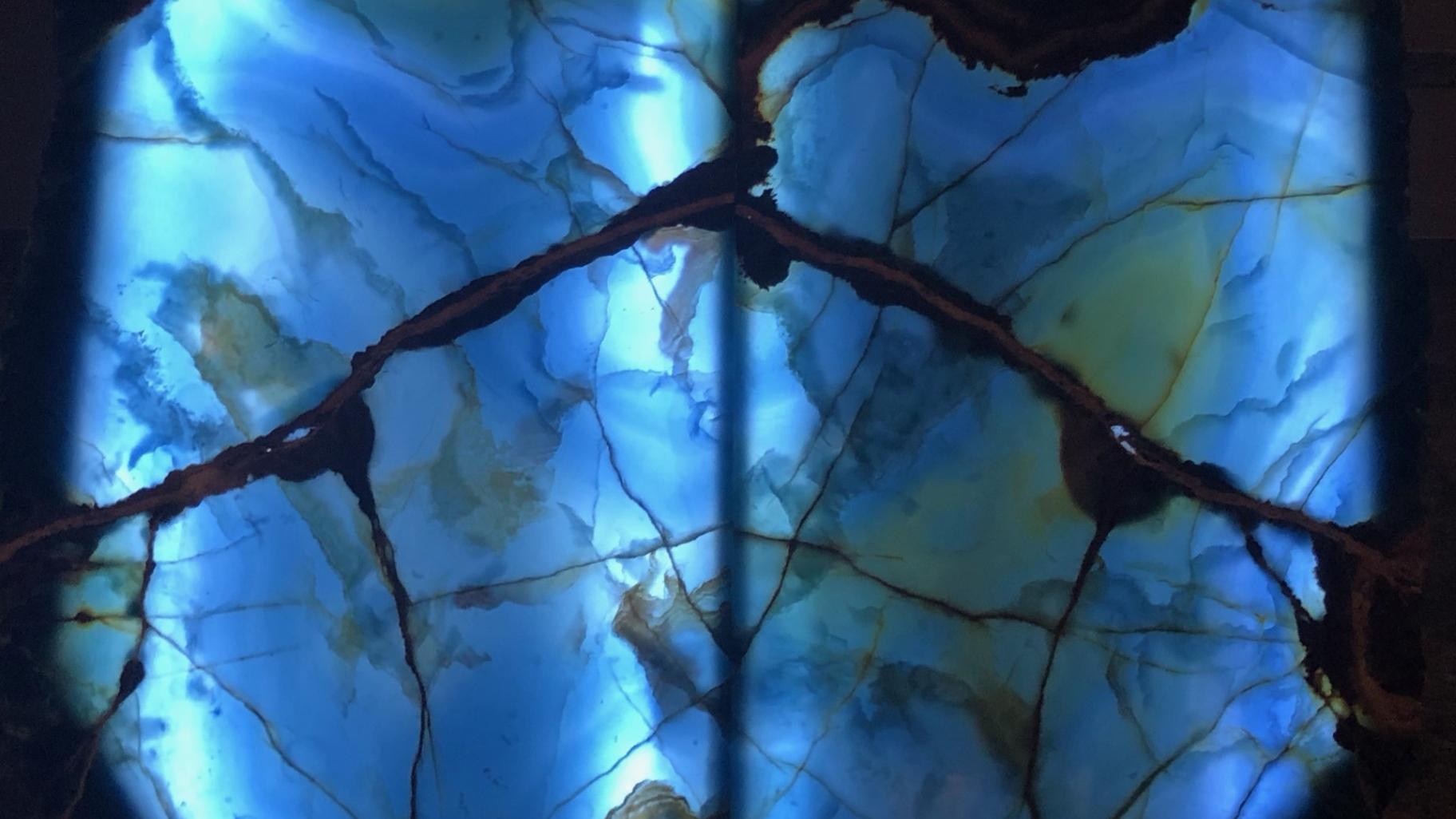 Calcite at the Lizzadro Museum of Lapidary Art. (Marc Vitali / WTTW News)
Calcite at the Lizzadro Museum of Lapidary Art. (Marc Vitali / WTTW News)
The centerpiece of the donation is a 3x4-foot piece of calcite that’s cut and polished, backlit and brilliantly blue. It charges the imagination.
“Calcite catches the eye, yet it’s a common mineral,” executive director Kyle Brill said. “Calcite is found in everything, including the bedrock here in Illinois. It’s part of limestone.”
Brill is a new hire but has a long history with the museum. It even shaped him toward a career as a geologist.
“I used to come to the museum with a friend who’s one of the great-grandchildren of the founder,” Brill said. “As a kid I was really into dinosaurs and Indiana Jones, and you come into this place and there’s fossils and treasures. It’s a dream. This is one of the first places I ever heard the word ‘geology,’ so that was a big influence.”
Another highlight of the Driehaus collection are two loans — micro-mosaics that use tiny bits of stone for realistic effects. What look like Renaissance paintings are revealed, upon close inspection, to be made from pieces smaller than grains of rice.
Works from the Richard H. Driehaus Lapidary Collection are on view at the Lizzadro Museum through Aug. 31.
And the Lizzadro Museum will soon lend four pieces of lapidary art to the Driehaus Museum for its upcoming exhibition “Chicago Collects: Jewelry in Perspective,” opening May 23.
 Left: Lapidary art made by artist Perry Brent Davis from chrysocolla, malachite and limonite. Right: Close-up of a mosaic at the Lizzadro Museum of Lapidary Art. (Marc Vitali / WTTW News)
Left: Lapidary art made by artist Perry Brent Davis from chrysocolla, malachite and limonite. Right: Close-up of a mosaic at the Lizzadro Museum of Lapidary Art. (Marc Vitali / WTTW News)

